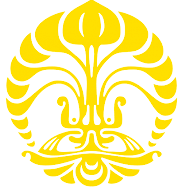Orthogonal labeling
Abstract
Let ∆G be the maximum degree of a simple connected graph G(V,E). An injective mapping P : V → R∆G is said to be an orthogonal labeling of G if uv,uw ∈ E implying (P(v) − P(u)) · (P(w) − P(u)) = 0, where · is the usual dot product defined in Euclidean space. A graph G which has an orthogonal labeling is called an orthogonal graph. This labeling is motivated by the existence of several labelings defined by some algebraic structure, i.e. harmonious labeling and group distance magic labeling. In this paper we study some preliminary results on orthogonal labeling. One of the early result is the fact that cycle graph with even vertices are orthogonal, while ones with odd vertices are not. The main results in this paper state that any graph containing K3 as its subgraph is non-orthogonal and that a graph G′ obtained from adding a pendant to a vertex in orthogonal graph G is orthogonal. In the end of the paper we state the corollary that any tree is orthogonal.
Keywords
Full Text:
PDFDOI: http://dx.doi.org/10.19184/ijc.2016.1.1.1
References
Gallian, J. A., A Dynamic Survey of Graph Labeling, The Electronic Journal of Combinatorics 16 (2014).
Gronau,H-D.O.F. Mullin, R. C. and Rosa, A., Orthogonal Double Covers of Com- plete Graphs by Trees, Graphs Combin. 13 (1997), no. 3, 251262.
Froncek, D., Group Distance Magic Labeling of Cartesian Product of Cycles, Australas. J. Combin 55 (2013), 167-174.
Cichacz, S., Note on Group Distance Magic Graphs G[C4], preprint.
Chartrand, G. and Oellermann, O., Applied and algorithmic Graph Theory, McGraw-Hill, 1993.
Refbacks
- There are currently no refbacks.

This work is licensed under a Creative Commons Attribution-ShareAlike 4.0 International License.












